Park life
Waitangi Park's first public weekend went off with a bang, as large crowds turned up to see the Phoenix Foundation (among others) at Saturday's Capital Celebration concert.
 The lawn was full and buzzing, without being overcrowded, showing that even with large parts of the lawn taken up by tents, stages and stalls of various descriptions, it's a good size to host such events. The "shadows of waka" (passages through the grass bank) proved to be an inspired feature, bringing complexity to what could have been a featureless expanse while providing shelter, impromptu climbing walls for children and a wide range of seating options. There are lots of subtle details too, such as irregular wooden planking through the walkway and a vertical gradient of pebble sizes in the concrete walls, bringing to mind the sedimentary strata of this shorefront location. Nicely done. The wetlands, boulders and graving dock extension garden also seemed to attract a lot of positive comments, and they make the park really stand out from the "paddock with rose garden" model that Waterfront Watch seems to advocate.
The lawn was full and buzzing, without being overcrowded, showing that even with large parts of the lawn taken up by tents, stages and stalls of various descriptions, it's a good size to host such events. The "shadows of waka" (passages through the grass bank) proved to be an inspired feature, bringing complexity to what could have been a featureless expanse while providing shelter, impromptu climbing walls for children and a wide range of seating options. There are lots of subtle details too, such as irregular wooden planking through the walkway and a vertical gradient of pebble sizes in the concrete walls, bringing to mind the sedimentary strata of this shorefront location. Nicely done. The wetlands, boulders and graving dock extension garden also seemed to attract a lot of positive comments, and they make the park really stand out from the "paddock with rose garden" model that Waterfront Watch seems to advocate. When the lawn wasn't being used for large events, the most frequented areas were the skatepark, children's playground and the stream-side promenade (due to the massively popular Earth from Above exhibition). The only really busy part after dark was the skate park, which has stunning blue lighting and seems to offer some real challenges to skaters, bmxers and the like.
When the lawn wasn't being used for large events, the most frequented areas were the skatepark, children's playground and the stream-side promenade (due to the massively popular Earth from Above exhibition). The only really busy part after dark was the skate park, which has stunning blue lighting and seems to offer some real challenges to skaters, bmxers and the like.I bumped into Megan Wraight (the designer of the park), and she said that some of the finishing touches will be done this week. In particular, the subsurface wetland in the southeast corner will be planted soon, transforming it from a somewhat mysterious gravelly maze into something much less barren. It looks like the streetball courts and graffiti walls should also be installed soon, rather than waiting until the Festival is over. Unfortunately, we won't be getting the promised wind turbines, as these turned out to be too expensive and hard to get consents for. Waterfront Watch stuck their collective nose in there, and Mt Vic residents (including Sir Geoffrey Palmer) were horrified at the thought of being able to see something from their windows that actually moves. The design has left space for them, though, so maybe we can look forward to them in the future.
This Saturday's "Picnic in the Park" features The Sharon Shannon Band and Antonio Forcione, together with what the print programme describes as "New Zealand's best". Depending upon your view of Irish music and acoustic jazz guitar, that might be enough to tempt you down to the park. But the online programme now reveals that the New Zealand act will be Salmonella Dub, who should appeal to a different demographic and get the park full and pumping from 3pm.
If you like Salmonella Dub, then according to music-map.com you should like Pitch Black as well. You're in luck, because in a recent announcement, they are playing the Festival Club on Friday the 17th. I would have mentioned it earlier, but I wanted make sure we got our tickets first! $40 seems a bit steep for a gig, but I've somehow never managed to see them in New Zealand, despite having caught them several times overseas.
 Speaking of the Festival Club, "bush whacker" was first to identify this as the identity of yesterday's mystery bar. I had hoped that some people might have fooled into thinking of Hummingbird or Shed 5, but you're right, the snake is a dead giveaway. The tent itself is known as the Pacific Crystal Palace, and it was designed by local architect Gus Watt as an antipodean interpretation of the Belgian Dans Paleis that used to travel out here for the festivals. Watt is well known for going against the minimalist trend of the last couple of decades, often incorporating Hundertwasseresque mosaics into his buildings, such as the distinctive apartments in Frederick St. The club gives another dimension to the park, and with any luck by next summer there should be some comparable bars or restaurants in the Chaffers Dock building.
Speaking of the Festival Club, "bush whacker" was first to identify this as the identity of yesterday's mystery bar. I had hoped that some people might have fooled into thinking of Hummingbird or Shed 5, but you're right, the snake is a dead giveaway. The tent itself is known as the Pacific Crystal Palace, and it was designed by local architect Gus Watt as an antipodean interpretation of the Belgian Dans Paleis that used to travel out here for the festivals. Watt is well known for going against the minimalist trend of the last couple of decades, often incorporating Hundertwasseresque mosaics into his buildings, such as the distinctive apartments in Frederick St. The club gives another dimension to the park, and with any luck by next summer there should be some comparable bars or restaurants in the Chaffers Dock building.


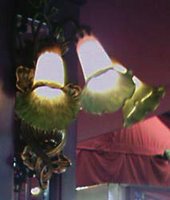



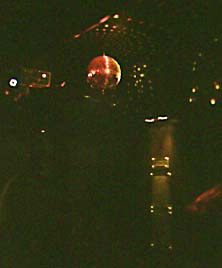
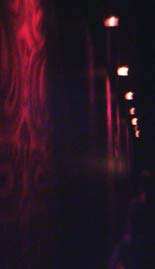


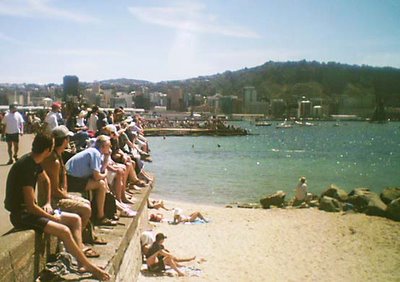



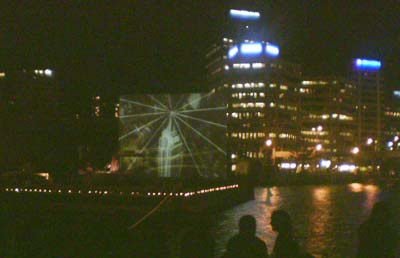




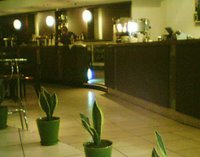




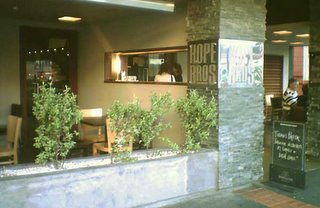
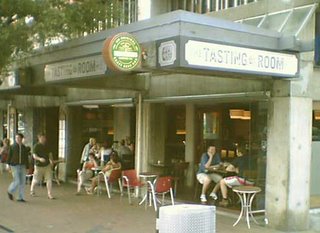




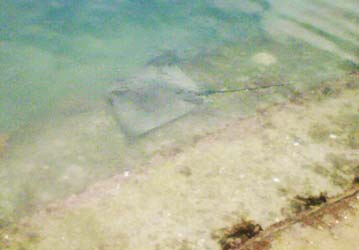
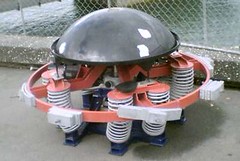

 For a start, there would be a maximum site coverage of 45%, and as this aerial photo shows, the houses cover about 70% of their sites. They would also have to be set back at least 3m from the street to allow a "front yard", and these houses (in common with many around the area) look to be set back by no more than about half that. It's hard to tell without measuring, but I think the 9m height limit shouldn't be an issue - though if you take it from street level rather than ground level, it might be a different story.
For a start, there would be a maximum site coverage of 45%, and as this aerial photo shows, the houses cover about 70% of their sites. They would also have to be set back at least 3m from the street to allow a "front yard", and these houses (in common with many around the area) look to be set back by no more than about half that. It's hard to tell without measuring, but I think the 9m height limit shouldn't be an issue - though if you take it from street level rather than ground level, it might be a different story. Have no fear, arty jocks of Wellington. The lateral-thinking people of the Fringe have felt your pain and devised
Have no fear, arty jocks of Wellington. The lateral-thinking people of the Fringe have felt your pain and devised 






